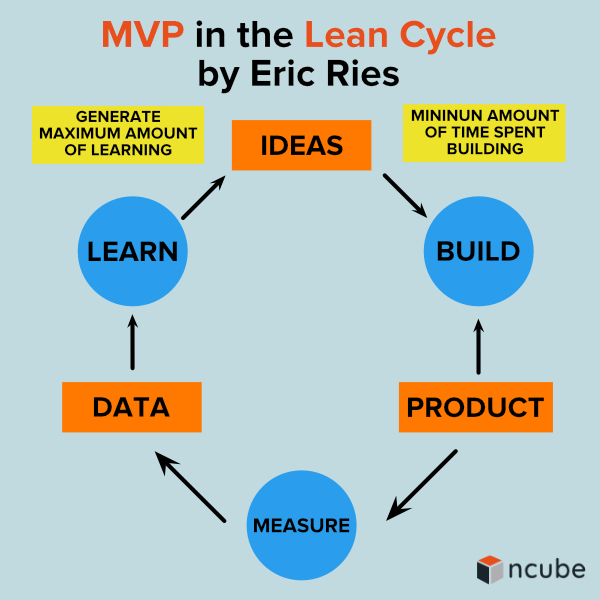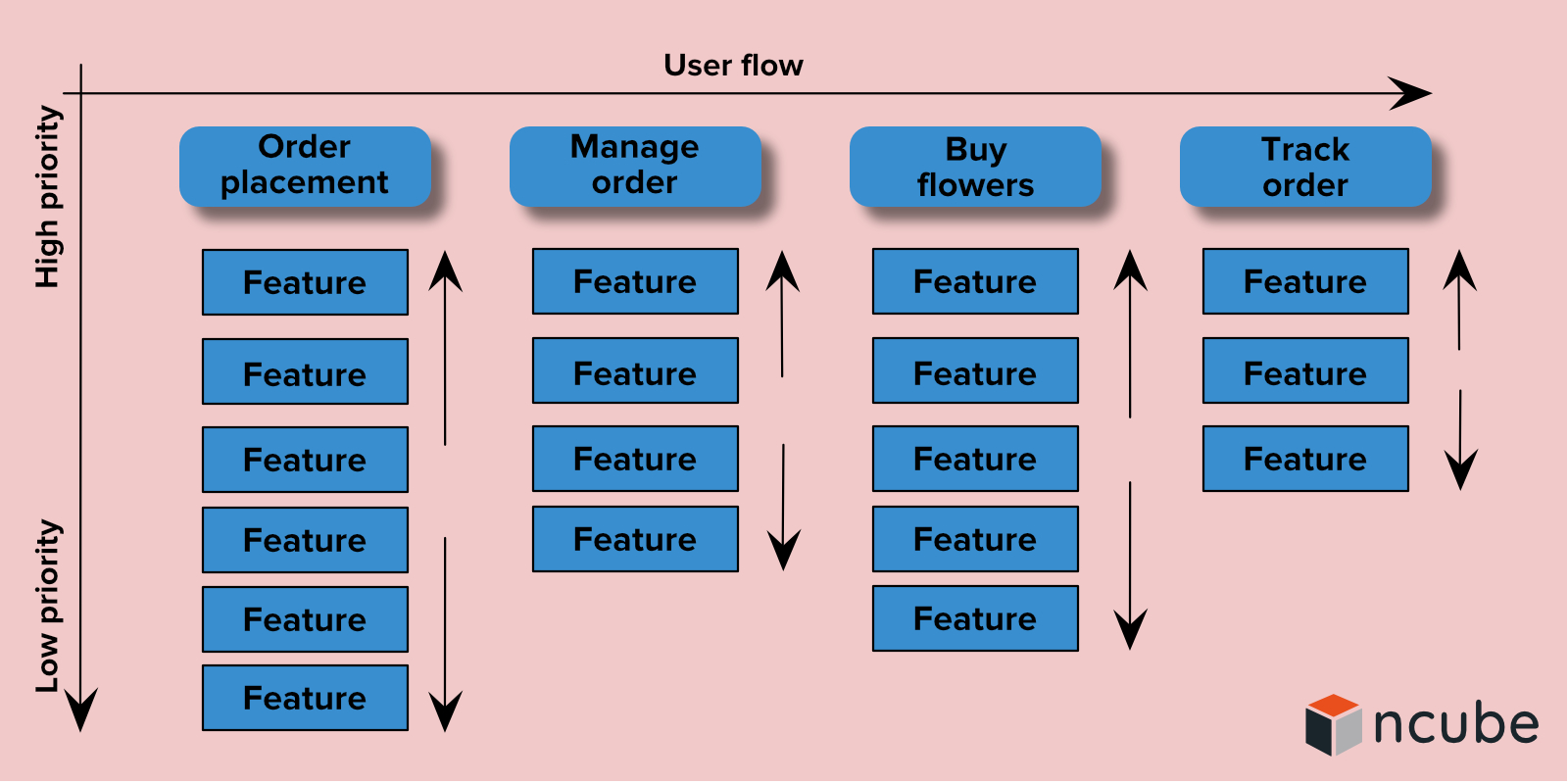
How to Build a Minimal Viable Product: A Guide with Examples

It takes years to make a great software product loved by millions of people. Think Facebook, Instagram, Uber. None of these behemoths started out as full-fledged products. In fact, their initial versions were a far cry from the current ones. They have been developed into the products we know gradually, one feature at a time.
Have a great idea for a business but don’t know how to measure its potential? There are some proven ways. You may want to run this idea by someone who looks like your target audience. Create a landing page. Experiment with SEO and pay-per-click. Introduce your product on your Youtube blog. Build an actual software.
All of these are examples of Minimum Viable Product (MVP). Yes, it comes in many shapes and forms. But no matter what it looks like, an MVP aims to paint a picture of your product’s potential. So, if you are planning to build one, dive deeper into this topic.
What does MVP stand for?
Simply put, an MVP is a bare-bones version of your product built with the purpose of validating your idea. It includes the minimum number of features that address the main problem you are trying to solve. The “minimum” means getting it to the market quicker and the “viable” assumes the product needs to be a working one. The next versions of the valuable product will be developed basing on the feedback from users.
The term was popularized by Eric Ries in his book “The Lean Startup.”
MVP business meaning by Ries: “A Minimum Viable Product is that version of a new product which allows a team to collect the maximum amount of validated learning about customers with the least effort.

What are the benefits of an MVP? It lets you:
- Learn if there’s a market for your business idea;
- Collect valuable insights about the needs of a target audience for further product development;
- Gain an understanding of the product’s potential;
- Collect the feedback from first adopters;
- Start to build a base of loyal users;
- Attract investors.
What an MVP is not?
The nature of an MVP is often misunderstood. Many startups see an MVP as a way to save time and money. Lacking the knowledge about their target market, they strive to build a full-functioning product on a shoestring budget, only to hit rock bottom.

Above all, MVP software is a learning tool. It’s cost-effective because it contains only the necessary functionality and a sufficient number of features to test an idea.
That said, it’s better to avoid building an MVP to cut costs on development. Instead, MVP is an ideal tool to take your idea for a spin so you could understand whether it’s worth further investment.
Most importantly, an MVP doesn’t need to have a fancy design, but it needs to communicate value. It also needs to be intuitive and easy-to-understand. If a user finds it convoluted, they won’t be able to appreciate its value. In fact, creating a beautiful design to test an idea can be risky as it may distract the user from the value of your product.
Read also: How to Write a Startup Business Plan That Will Secure Investment
MVP product recipes: Key types
There are lots of approaches to building an MVP. Let’s have a look at the most common ones.
Wizard of Oz MVP
The name of this MVP type reflects its idea. Similar to the way the Wizard of Oz simulated an illusion of a scary green head by pulling the levers behind the scene, this type of MVP only gives an impression of a fully functioning system, In reality, all the tasks of an automated system are performed by a human.
This strategy was implemented by Nick Swinmurn, the founder of Zappos. In the early days, he didn’t spend a dime on shoe procurement or warehouse lease. He simply posted pictures of items on the website to test his assumption of people buying shoes online. Upon receiving an order, he would go to the store, buy a necessary item and ship it. After realizing that his idea was viable, he created a fully-functioning website.
Wizard of Oz MVP recipe:
- Put up a website;
- Take pictures of items you want to sell, write descriptions, pricing, etc;
- Receive orders and ship products manually.
Concierge MVP
Similar to the previous recipe, this one doesn’t involve an automated system. With the Concierge approach, you will need to walk a user through the concept of your product, providing a wow-effect service. This way you connect with users and learn how they respond to your product.
A good example of Concierge MVP is Food on the Table, a company that specializes in generating custom meal plans based on customers’ preferences. Manuel Ross, CTO of the company, used to approach potential customers in person, offering a monthly subscription to his service. He generated the recipes manually and accompanied customers while they shopped for groceries.
Concierge MVP recipe:
- Find potential customers and ask them about their food preferences;
- Create weekly meal plans;
- Deliver groceries for each client;
- Improve the service based on the feedback you receive from clients.
This approach is more theoretical than the Wizard of Oz. It’s geared towards idea generation and connection with the customer to learn about their needs and demands.
A piecemeal MVP
Startups turn to this approach when it’s possible to develop a product using only off-the-shelf tools and solutions. It’s is a cheap way to introduce an idea to the market, but it can be time-consuming to put together all the needed services to enable functionalities of your product.
Read also: How to Write a Startup Business Plan That Will Secure Investment
Groupon started as a piecemeal MVP. In the early days, it was a combination of a plain website and email – it’s been a long time before the service was automated and a mobile app appeared.
A piecemeal MVP recipe:
- Launch a blog where you post deals from local stores;
- Generate PDF files with deals;
- Email them to potential customers.
Other MVP recipes:
- Launch a plain website with pictures (Airbnb)
- Post and promote an explanatory video (Dropbox)
- Create a landing page (Buffer)
How to build a minimum viable product?
Step 1. Identify the problem
What problem your product is going to solve? An answer to this question will define the value of your product. The best way is to find an answer is through conducting interviews with potential customers and investigating your competitors.
Step 2. Define your target audience and narrow it down
Trying to satisfy the needs of a broad audience is a long shot. Targeting a specific audience, on the other hand, enhances your chances of success.
It’s recommended to create a detailed description of an ideal customer. Think of a real person, someone who will be ready to part with money for your product, and do so without hesitation. Things to include in your description:
- age;
- gender;
- profession;
- habits;
- hobbies and interests;
- technologies they use, etc.
This description will give you an idea of how your product fits in with their lifestyle. Let’s take Uber as a minimum viable product example. The company decided to target those who required a taxi on time:
- Tourists and business travelers;
- People who go to club, party, and events frequently;
- Travelers during the bad weather condition;
- Late-night travelers.
Uber clearly understood the problems of the users, which resulted in creating a disruptive service.
Step 3. Analyze competitors
You are probably not alone in the targeted niche, so it makes a lot of sense to get to know who you’re competing with. Think about it, the uniqueness of your product could be in addressing the drawbacks of the existing solutions.
- Analyze three major players in the market. What are their strengths and weaknesses? Can you provide a better solution?
- Describe their market share. Dive deep into their sales strategies, revenues, financial and marketing goals. It will help you understand how successful they are and learn from their experience.
- Use analytics software: Similar Web, Quantcast, App Annie, and AppFollow collect data about sites and applications of the rivals. These tools will shed light on how your competitors are doing in terms of popularity, monthly traffic, and what kind of audience they attract.
Step 4. Map out a user flow
It’s a story of a user trying to achieve their goal by using your product. When you imagine it, think of the concrete steps a user needs to take. Does the user have enough information to move on to the next step?
Let’s use a flower delivery app as an example of user flow. Typically, a user goes through these steps:
- order placement
- managing an order
- buying
- tracking order
- receiving order
Step 5. Make a list of MVP features and prioritize them
Now that you have mapped out the user flow, it’s time to list a set of features pertaining to each step. The creator of user story, Jeff Patton, believes that one feature should embody one action performed by a user.
We have outlined 5 steps a user needs to take to get flowers delivered. Now, make a list of functions for each step. For example, step one, placing an order, may contain the following core features:
- choose address
- filter options
- choose an item
- add an item to cart
Now prioritize the features by dividing them into high-priority and low-priority. The most used features will be at the top of your list. In the end, your MVP case will look like this:

The scope of MVP for your first iteration will include the high-priority features and ones without which the product cannot bring value.
Step 5. Develop your MVP
After you have defined the scope of MVP, time to roll up your sleeves for a laborious iterative process of development. Following the steps within Kanban or Scrum frameworks, you can improve the product as you go.
Read also: Software Development Life Cycle: A Guide to Phases and Models
Keep in mind that MVP needs testing throughout an entire development process. Alpha testing can be done by your in-house Quality Assurance experts. At the final stages, you will need to involve external resources for beta testing. Prior to rolling out to the market, make sure the final product functions properly so that your early adopters can see its value.
Wrapping up
For most startups, the biggest question (and risk) is the existence of the market they want to target. For the founders of Dropbox is was: “Would people want to sync files?” At Zappos, the founder pondered over: “Would people buy shoes online?” With Airbnb, the question was, “Would anyone want to live in a stranger’s home?” In all cases, startups turned to the MVP concept to find an answer.
We at NCube are proponents of validating ideas with MVP. If you need help with your MVP project, we can engage experts to work on the technology side of your solution. We abide by the IP protection regulations and sign an NDA before any information is disclosed. Let’s connect?
Recommended articles



